You’d think a 55-inch TV means the screen is 55 inches wide, right?
Not quite. That number comes from a diagonal measurement, corner to corner, not the width of the screen. So when people say “I’m buying a 65-inch TV,” they’re not talking about how much wall space it takes up.
Which is… kind of important.
Especially if you’re trying to fit it between bookshelves, above a dresser, or even just making sure it doesn’t block your window.
Let’s clear up the confusion with diagrams, examples, and actual size comparisons.
How to Calculate TV Dimensions Accurately
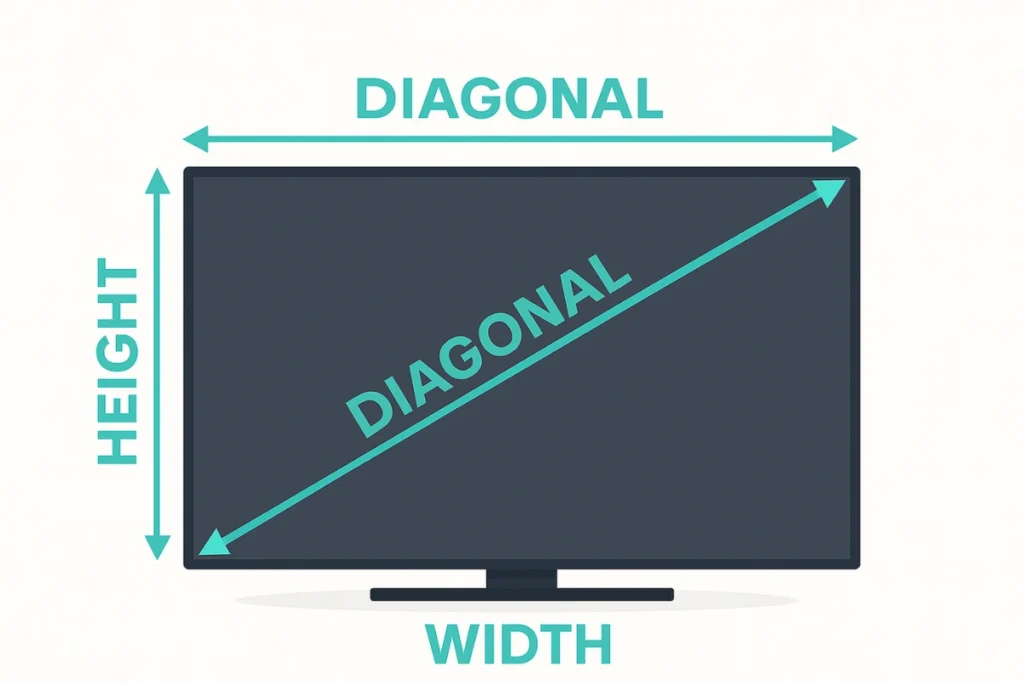
Ever wondered how wide or tall a TV really is when all you get is the diagonal number? That “55-inch” or “65-inch” label? It’s just the diagonal length of the screen not the width or height.
📐 TV Dimension Calculator
Understand What TV Size Really Means
The advertised size of a TV say 55 inches refers to the diagonal measurement of the visible screen only, from one corner to the opposite corner.
This doesn’t include bezels or the frame.
To convert that diagonal into width and height, you need one more thing: the aspect ratio.
Know Your Aspect Ratio
Most modern TVs use a 16:9 aspect ratio that’s the same shape as your laptop screen or YouTube video.
That simply means:
- For every 16 units of width, the screen has 9 units of height.
- It forms a consistent triangle, which allows you to calculate sides using basic math.
So even though the diagonal is fixed, the width and height will vary depending on the design.
How Wide Is a TV, Really? (Including the Real Math)
TV size is measured diagonally from one corner of the screen to the opposite. But most people care about how much wall or table space the TV actually takes.
To calculate this, you can use this simple, math-backed formula based on the standard 16:9 screen ratio:
Width = (Diagonal ÷ √(16² + 9²)) × 16
Height = (Diagonal ÷ √(16² + 9²)) × 9
Or simplified:
Width ≈ Diagonal × 0.872
Height ≈ Diagonal × 0.49
Example:
For a 75-inch TV:
- Width ≈ 75 × 0.872 = 65.4 inches
- Height ≈ 75 × 0.49 = 36.8 inches
Common TV Sizes (Diagonal vs Actual Dimensions)
| TV Size | Approx. Width (in) | Approx. Height (in) |
|---|---|---|
| 32″ | 27.9 | 15.7 |
| 40″ | 34.9 | 19.6 |
| 50″ | 43.6 | 24.5 |
| 55″ | 47.96 | 26.9 |
| 65″ | 56.68 | 31.9 |
| 75″ | 65.4 | 36.8 |
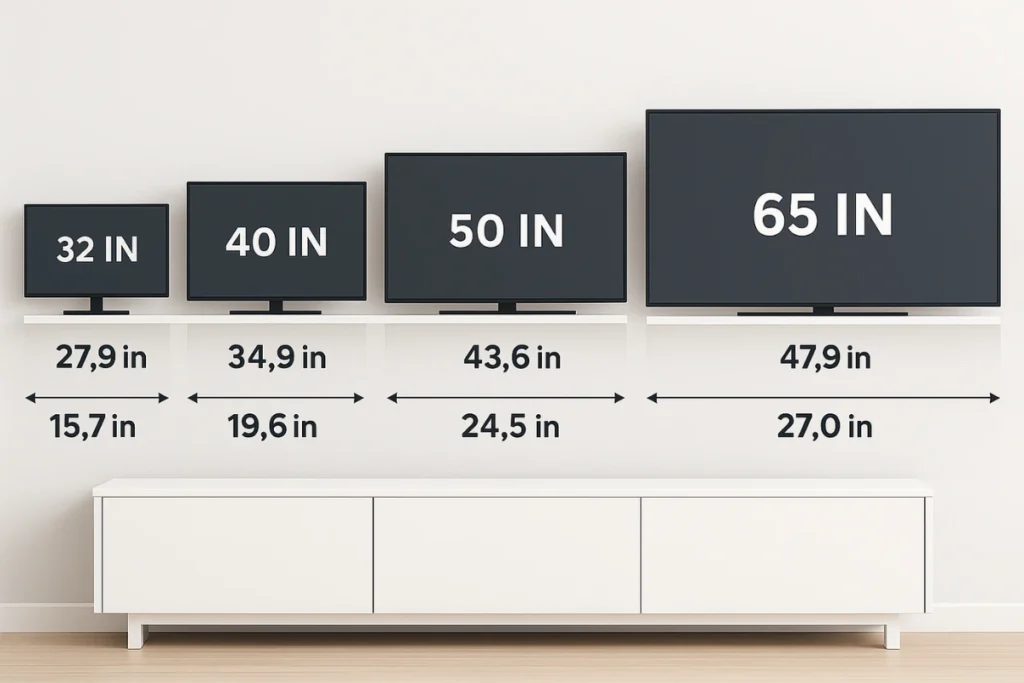
These numbers exclude bezels and stands always check your product’s full dimensions before mounting or buying furniture.
Where TV Size Fails You (And What to Measure Instead)
So here’s the thing: diagonal screen size doesn’t help you hang a TV, fit it into a dorm corner, or center it over a dresser.
Before you buy, you need to check:
- Actual width – does it fit the wall space?
- Height with stand – will it block anything?
- Stand footprint – can your table or console support it?
- Wall clearance – for air circulation, cables, or movement
- Viewing distance – is it too close (eye strain) or too far (tiny picture)?
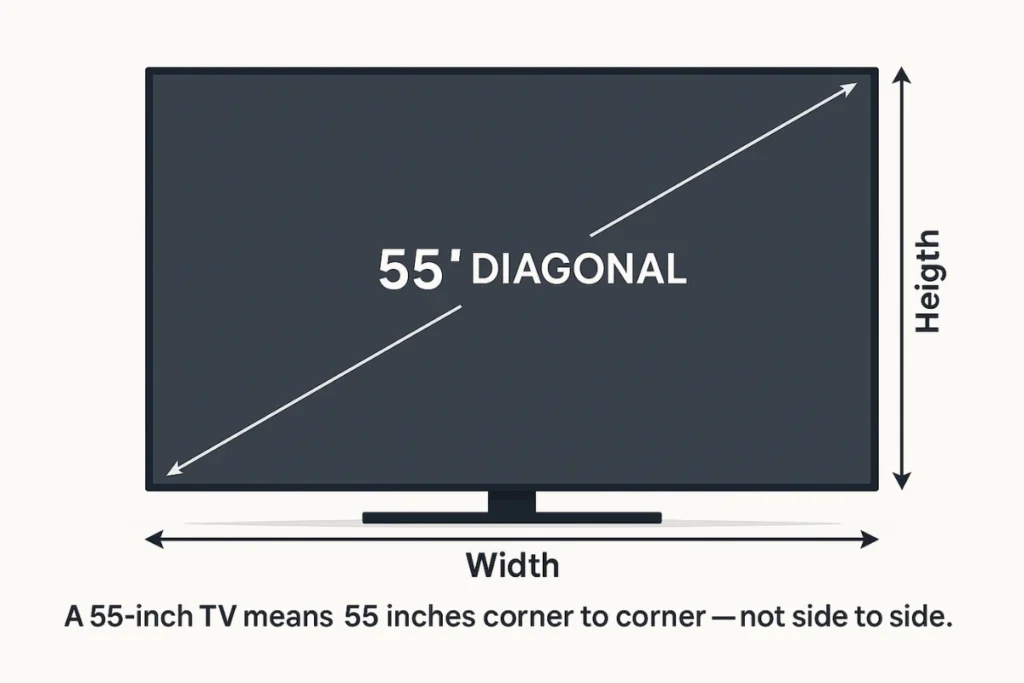
Quick tip: measure the space where the TV will go, then check the actual dimensions in the product specs.
Never rely on “55 inches” alone.
Visual Analogies: What a TV Size Actually Looks Like
Sometimes numbers aren’t enough. You want to know what a TV will feel like in your space.
So here’s what each common size looks like in real life not just in numbers, but in comparison to stuff you already know.
32-Inch TV – About the Width of a Standard Desk Chair
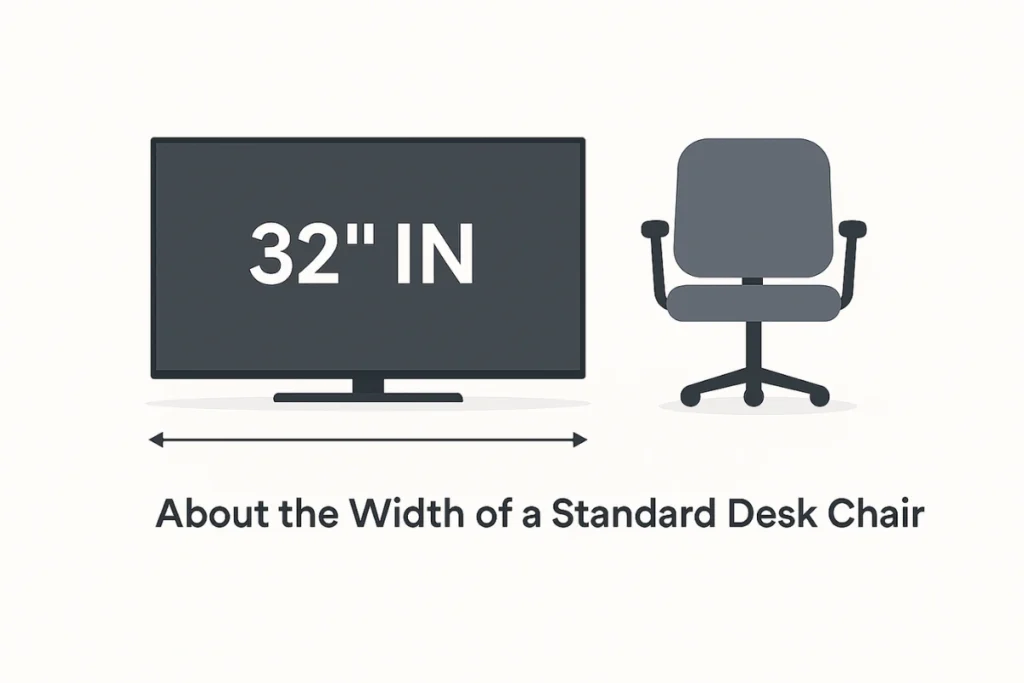
- Feels like: A personal screen. Great for tight dorms or side walls.
- Rough width: 28 inches
- Compare it to: A medium-sized computer monitor or a high-back chair.
- Best for: Solo viewing, desks, kitchens, or secondary rooms.
40-Inch TV – Close to a Standard Writing Desk
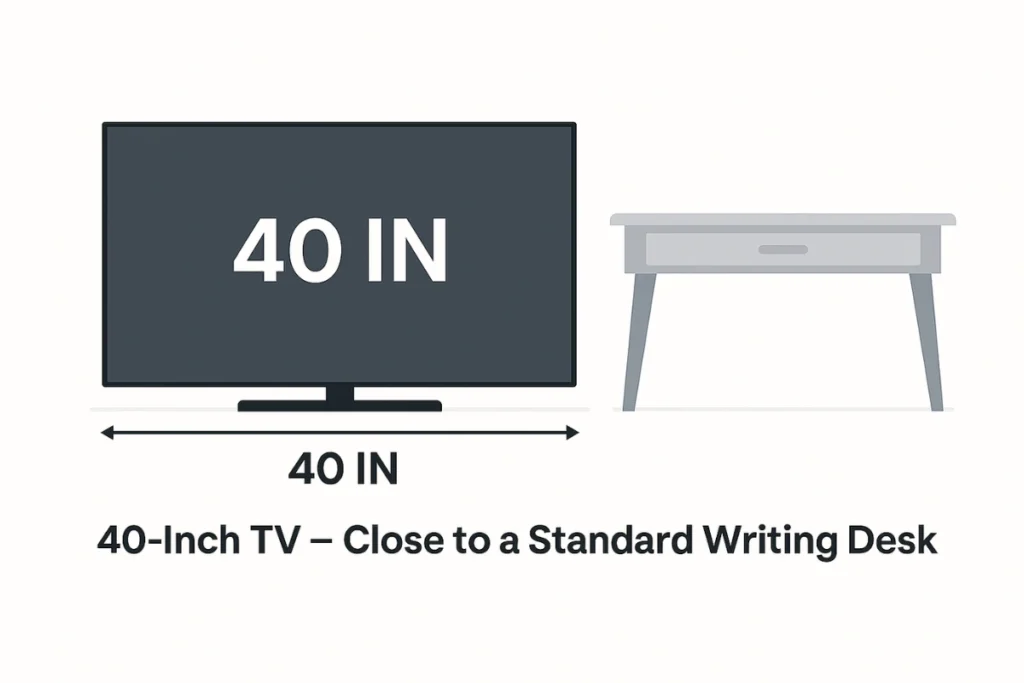
- Feels like: Small but surprisingly usable, especially if wall-mounted.
- Rough width: 35 inches
- Compare it to: A standard 40-inch desk or a dorm-room dresser.
- Good fit for: Compact living rooms or mid-sized bedrooms.
50-Inch TV – As Wide as a Twin-Size Mattress (on its side)
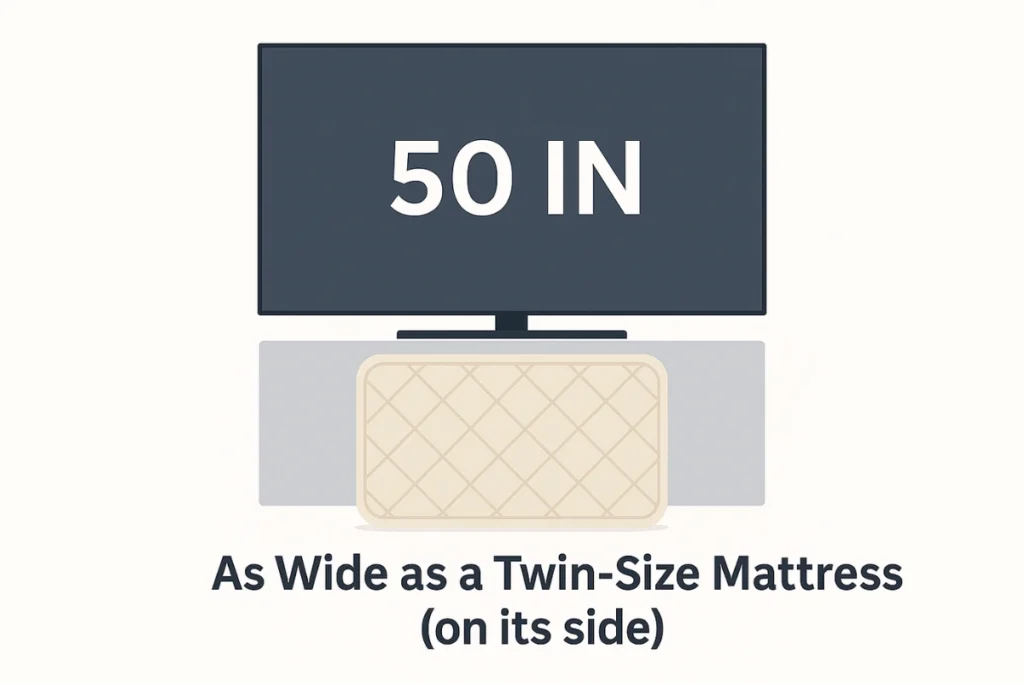
- Feels like: The sweet spot in medium rooms.
- Rough width: 44 inches
- Compare it to: The length of a twin mattress leaned upright.
- Best for: 10×10 to 12×12 rooms, 6–9 feet viewing distance.
65-Inch TV – About as Wide as a Full-Size Bed Headboard
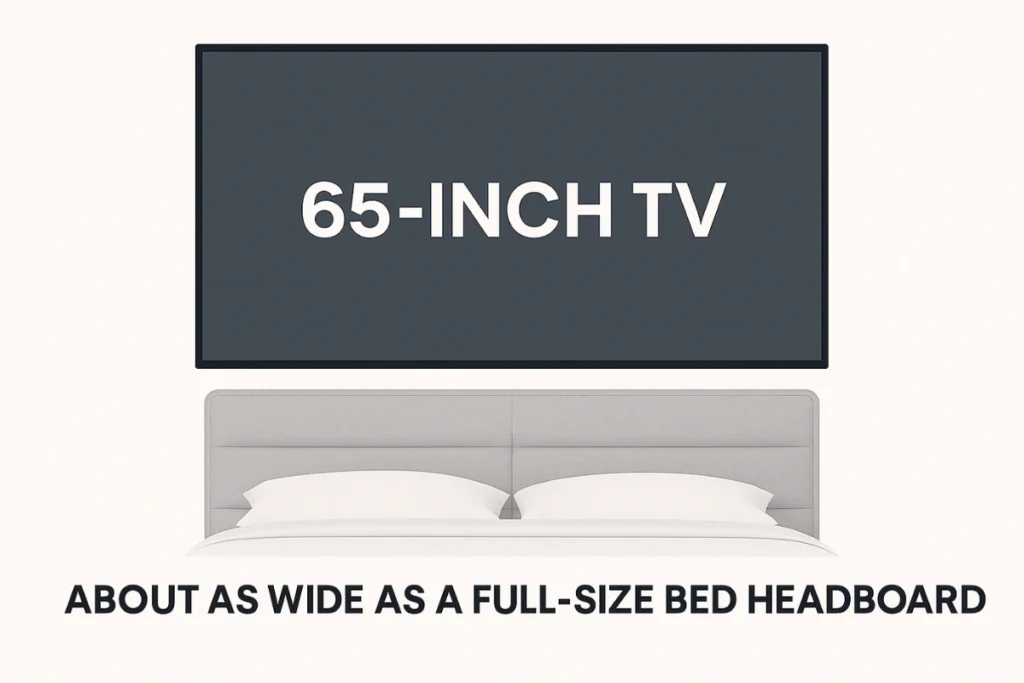
- Feels like: Home theater vibes. Impressive but possibly overwhelming in small rooms.
- Rough width: 57 inches
- Compare it to: A large dresser or bedroom headboard.
- Only works if: You’re sitting at least 8 feet away.
FAQs: People Also Ask About Measuring TVs
Q1. Do you measure a TV with or without the bezel?
TV size (like “55-inch”) always refers to the screen only — not the bezel or frame. The actual width may be a few inches more.
Q2. What does 65-inch TV mean in actual width?
A 65-inch TV (16:9 ratio) is about 57 inches wide and 32 inches tall. Always check the product specs for exact dimensions.
Q3. Is TV size measured in inches or centimeters?
Inches are standard in most countries. But product pages often include cm equivalents too — especially for European or global brands.
Q4. Can I measure a TV myself?
Yes! Just use a tape measure diagonally from one screen corner to the opposite (not including the bezel). That gives you the advertised size.
Q5. Why is my “55-inch” TV not 55 inches wide?
Because that number measures the diagonal — not width. A 55-inch TV is usually only about 48 inches wide.
Q6. How do I know what size TV fits my room?
Start by measuring your viewing distance and available wall/table space. Then check the actual dimensions (not just diagonal size) of the TV model.
What Size Fits You?
Knowing how to measure a TV goes beyond just reading the box.
It’s about understanding how diagonal size, actual width, and room fit all come together.
Next time you hear someone say, “Just get the biggest one that fits,” remember: It’s not just about size. It’s about how it fits your space and your lifestyle.
Want more size comparisons like this? Explore our growing collection at ScaleAnalogy.com — where real measurements meet real life.



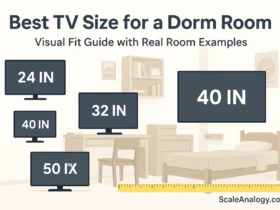
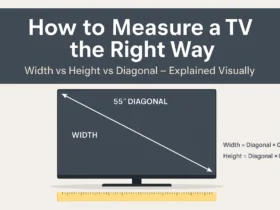



Leave a Reply